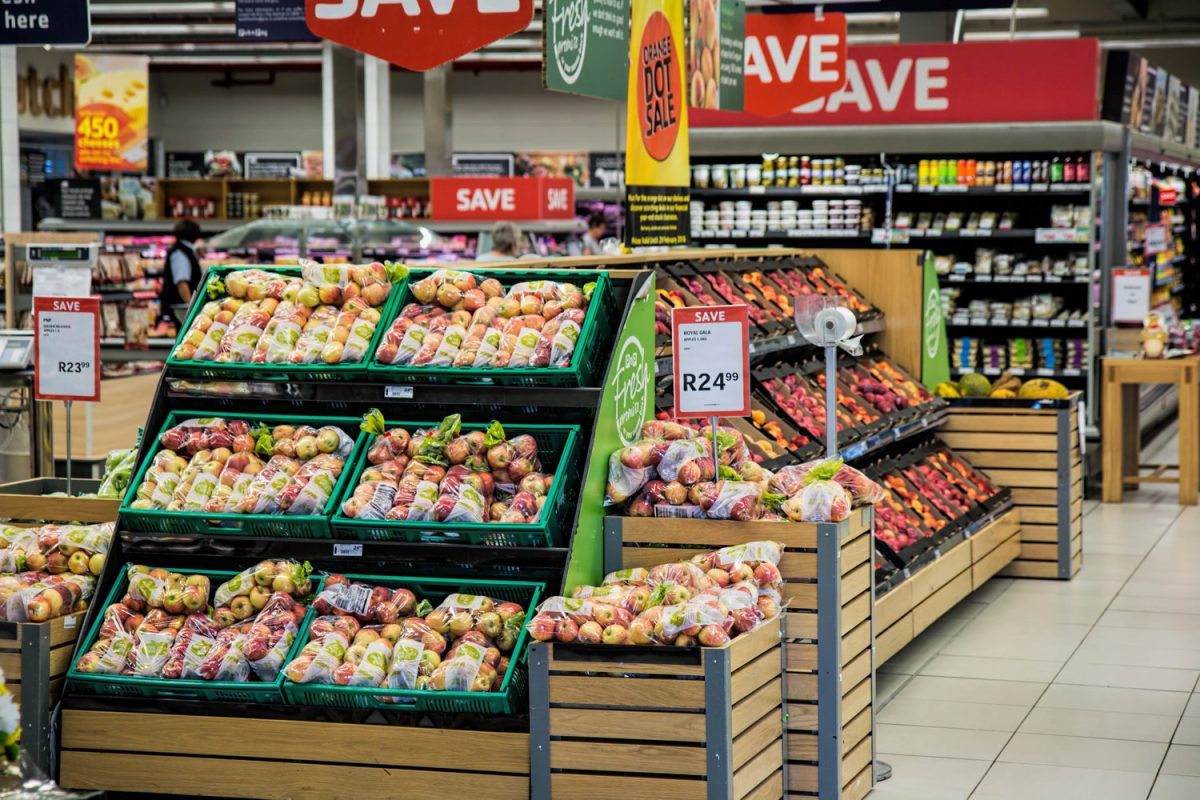Upon entering a supermarket, one is instantly subjected to strategically placed flowers, calculated dairy placements, and appealingly arranged seasonal scents. Not only is this carefully designed approach a way to garner more money from the customer, but it also brings the shopper through an elaborate excursion that reflects the decades of psychological research on consumer behavior.
As a shopper enters the store, they are at once greeted with the mood-lifting scent of fresh flowers and fruits, as well as the sight of cheery, vibrant colors. This primes the consumer for their upcoming shopping experience, as grocery stores know that those who are happier tend to spend more money. This psychological effect is called “implicit priming”, where a person is first exposed to one stimulus, and later reacts to a similar stimulus without consciously knowing why (APA Concise Dictionary of Psychology, 2009). Supermarkets enhance this effect by working with farmers to optimize the colors of fruits and vegetables to give a better impression of the food that shoppers are surrounded by. This front-of-store priming acts as the very first tactic used by markets to enhance a shopper’s mood, encouraging them to buy a surplus of what they originally entered the store to obtain.
However, the techniques used by stores to get shoppers to spend money don’t just stop here. In fact, the essential groceries that are most commonly placed on shopping lists, such as eggs, milk, fruit, and vegetables, are separated and strategically set around the store to force the customer into a full-length walk of the supermarket. The now-necessary extensive walk throughout the store leads to shoppers being more likely to pick up higher margin items, such as specialty and international foods, alcoholic beverages, and premium or gourmet products. This is why supermarkets don’t have one specific aisle containing all essential products—the whole process of meandering through product-filled middle aisles is ensuring that the shopper maximizes their time in the market. Additionally, scientific research has shown that after a certain threshold of time spent in the store is met, decision-making becomes more emotional. This exact effect has been demonstrated at Bangor University by Dr. Paul Mullins and his team, (Hustle Escape, 2019) where a brain-scanning technology, functional magnetic resonance imaging (fMRI), showed that after 23 minutes in a mock-up supermarket, customers began making more emotionally-based decisions, rather than decisions made from the frontal lobe—the cognitive part of the brain. After more time spent shopping, the brain gets tired and ceases to form rational thoughts, which is key for supermarkets to manipulate the shopper’s spending decisions.
Another way in which consumer psychology is used to influence shoppers is optimal product placement. As customers filter through the middle aisles, there is a difference between the products placed at an optimal height to manipulate the buyer’s purchases, versus products that are not in this ‘grab-level’ space. Through advanced eye-tracking technology, Simeon Scammel-Katz in The Art of Shopping: How We Shop and Why We Buy—a book focused on the neuroscience studies behind a shopper’s mindset—shows that “we naturally look lower than eye level to somewhere between waist and chest level.” Retailers label this as the “grab-level” space, which is the most desired and expensive spot for brands. Through a consumer’s lens, the products at this level seem more appealing, even if there are cheaper options above or below these shelves.
Some other strategies utilized by supermarkets are less noticeable to the consumer, as the orchestrated symphony of sonic soundscapes adds another layer to the carefully curated shopping experience. The auditory landscape, strategically designed to complement the visual and olfactory elements, is a psychological tool aimed at shaping the shopper’s behavior. As consumers traverse the store, they are enveloped in mood-altering melodies, which foster a positive emotional state. This auditory priming, a facet of implicit priming in psychology, sets the stage for the shopper to be subtly guided by an emotional undercurrent. Much like the strategic placement of essential items, the sonic soundscape of the supermarket encourages a leisurely stroll through the aisles, maximizing the time customers spend within the store. Along with crafting a positive mood for the consumer, the tempo and rhythm of the music can influence the rate at which one moves throughout the store. An upbeat tune encourages quicker movements, while a slower beat might create more dwell time within the store. Sonic soundscapes are strategically used to guide shoppers to a certain area, most likely areas with promotions or displays. The musical ambiance contributes to an immersive sensory journey, subtly moving consumers towards decisions that align with the store’s objectives.
Now that the shopper has been effectively manipulated into amply filling their cart, they head to the checkout queue and wait patiently for the conveyor belt to clear a space. Luckily for them, an abundance of ambrosial sweets and chocolate sitting on the queue shelving look more appetizing than ever. This is yet another scheme used by stores to draw the consumer into stuffing their shopping cart generously. Likely at this point, the shopper’s capability to make rational decisions has been diminished, and many things that have occurred throughout the shopping trip have been meticulously planned out by the supermarket. As a finale, the checkout lines are lavishly lined with cheap, small, hard-to-resist products that at this point easily influence the shopper.
These strategies have also undeniably affected many students at Horace Greeley High School, many of whom are also local Whole Foods (and other grocery store) shoppers. Greeley sophomore Charlotte Kupferberg recognizes these impulse areas at checkout spaces, which make her want small items such as a pack of mints. However, she says, “This is only effective if I am buying at the regular checkout because the self-checkout doesn’t have shelves near it.” Even though the packed shelves at the checkouts are designed to target a shopper’s final impulse to buy, other parts of the store are also always actively targeting one’s emotional decision-making. Additionally, sophomore Stella Myers shares that when she shops at Whole Foods, she tends to feel inclined to buy things that are not on her shopping list: “I get tempted to buy things I haven’t seen before, or if I think it looks interesting.” This mindset is exactly what markets manipulate people into thinking the moment they step foot into the store. From the immediate smell of flowers and washes of bright color that lure shoppers into a better mood, to the specialized and thought-out placement of essentials such as milk cartons, each step of the grocery store targets psychological influences to get consumers to spend more money.







